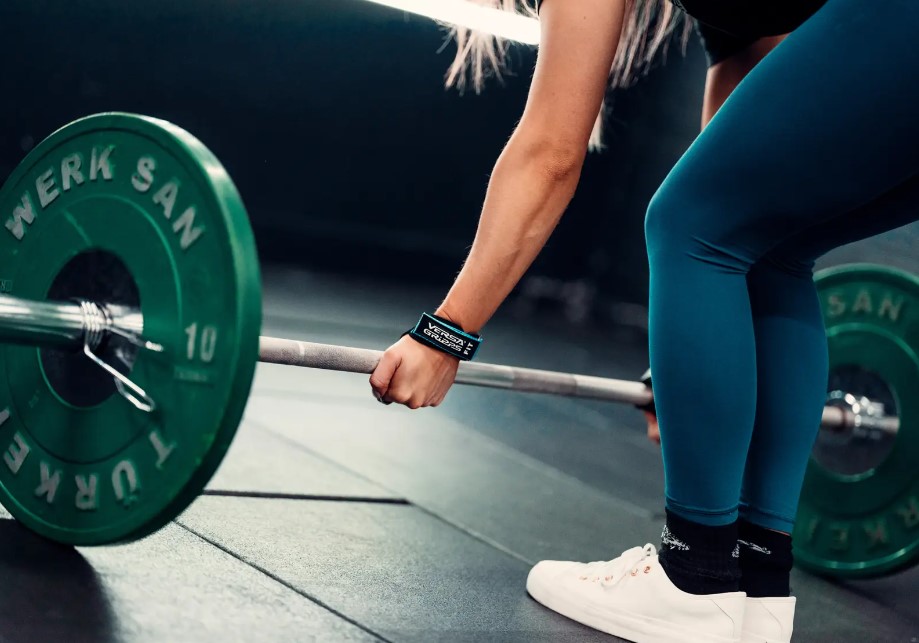
What Are Lifting Straps?
A fairly basic gym component, lifting straps frequently consist of a single piece of canvas, leather goods, or nylon.
To ensure that you maintain a firm and steady grasp on the barbell, weight, or kettlebell also have no concern about the load sliding out of the fingers, a lifting strap is going to secure over your hand and wrap over the object. In summary, lifting straps let you lift greater weights for longer periods of time by reducing grip fatigue.
Why would you want weightlifting grips for women?
Weightlifting grips for women is important because of continuous overload, which is crucial for developing muscle mass and strength, is what happens when we can lift the same loads for an extended amount of time or greater weights over time.
By doing thus, we have the ability to put more strain on our muscle groups, which frequently results in greater strength gains and muscular growth, yet we are also losing out on developing actual grip strength.
Methods for maintaining lifting straps Safe
While placing lifting straps on doesn’t seem very complicated, there are three simple procedures that need to be followed in order to accomplish it properly. To utilize and place on those lifting straps, do the following:
- As though creating a circle, insert the tip of the lengthy strap into the loop hole.
- Keeping your palms facing upwards, extend your hands and bring the loop around your wrist.
- Make sure every strap’s end points in the general direction towards your thumbs.
Something to keep in Note While Working lift straps
It is important that you tighten the straps and encircle the barbell. This will assist in keeping both of your hands close to the load. One of the more frequent mistakes individuals make is leaving the strap free, which prevents you from getting the necessary support and grasp.
Not fastening the straps correctly might cause injury to the fingers or wrist. You will become aware of the advantages of using your straps to isolate your muscles throughout pulling workouts after some practice and time. Some changes you might notice include less stress on your hands and wrists, as well as your forearms and biceps.
Benefits of Strapping Up
If you’re an avid weightlifter, you will ultimately need lifting straps to help you lift bigger weights.
- Offer wrist protect: By maintaining your wrist properly positioned with the handle and avoiding you from losing the bar, lifting bands protect the bones in your wrists and assist to lower the likelihood of injury.
- Lessen grip tiredness: You may lift a bigger weight for longer periods of time with an overhead strap to ease the burden on your hand strength.
- Increase the difficulty of strength learning: Lifting straps provide support for your wrists, enabling you to lift larger weights which you may be able to do without them. Lifting straps are used by bodybuilders and Olympic lifters to raise the bar and work with heavier weights.
When are lifting straps appropriate to use?
In order to get the full benefits of lifting straps, it’s critical to save their use for workouts and scenarios when it makes sense and adds value.
- Lifting straps help while performing exercises with free weights like dumbbells, barbells, & kettlebells as well as when working out using a pull-up bar.
- Activities like Deadlifts (classic, Romanian, or sumo versions), Bulgarian splitting squats, dumbbell steps, kettlebell shifts, bent-over bar rows, & farmer’s carries are all great uses for lifting straps.
- Weightlifting workouts like the clean and snatch need the usage of lifting straps as well.
- They are appropriate for a range of pull-up bars activities, including as dead hangs, hanging leg lifts (toes to bar), doing push-ups and various other exercises.









